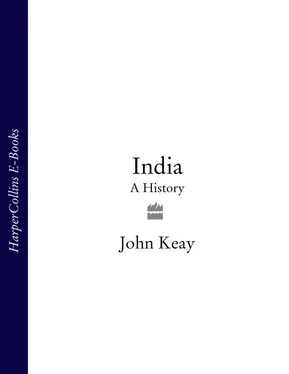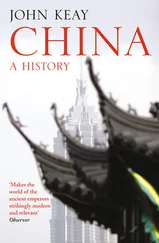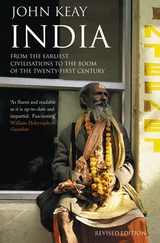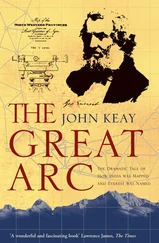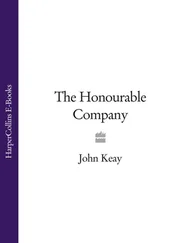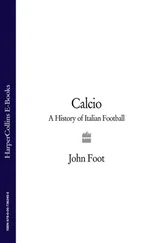Sadly, though, this is not a situation which makes for fluent narrative history. In a global landmass as vast and varied as the South Asian subcontinent an orderly linear progression from one cultural flowering to another, one dynasty to another, or one empire-builder to another will prove elusive. Only a still far from certain chronology, and not any sequential progression, demands that the Harappans and their archaeology take precedence ahead of the Aryans and their literature.
To anyone familiar with the Egypt of the Pharaohs, the warren of dun diggings which is an excavated Harappan site may seem unimpressive. It is hard not to sympathise with the first archaeologist to survey Mohenjo-daro. ‘I was greatly disappointed,’ wrote Mr D.R. Bhandarkar in his report. He was visiting the largely desert province of Sind in the winter of 1911–12 as Superintending Archaeologist of the Western Circle of the Archaeological Survey of India. ‘Mohenjo-daro’, he noted, meant ‘the Mound of the Dead Men’. There was one big mound and six smaller ones. And in words that must subsequently have haunted him, the Superintending Archaeologist dismissed the lot as ‘not representing the remains of … any ancient monument’.
According to local tradition, these are the ruins of a town only two hundred years old … This seems not incorrect, because the bricks here found are of the modern type, and there is a total lack of carved terra-cottas amidst the whole ruins. 3
Wrong in every detail, this statement must rank amongst archaeology’s greatest gaffes.
Today’s less qualified visitors, though willing to forgive the absence of ‘carved terra-cottas’, tend to bemoan that of more obvious features. For at Mohenjo-daro no pyramids or ziggurats, no sculpted towers or mighty henges frown over the deep and dusty thoroughfares. On first acquaintance it is as if the most extensive of the Harappan sites was never really a city at all, merely the footings and foundations of one.
This, though, is decidedly not the case. Deep in ‘the Mound of the Dead Men’ there was once activity and industry. Behind the extant façades of blank featureless wall families lived, craftsmen plied their trades and vendors sold their wares. If there was an absence of eye-catching memorials it was not, as will appear, through any lack of civic pride or direction. It may tell us something about the nature of authority in the Harappan state and the organisation of its society; more certainly it indicates the limited materials available to the city’s builders.
Four thousand years ago stone was as scarce in the lower Indus region as it is today. Even the local timber, though more plentiful than now, and possibly able to meet the need for roof joists, seems not to have been sufficiently well-grown for major construction purposes. Instead, it was used as fuel to fire brick kilns. The Harappans built almost entirely in brick, both sun-baked and kiln-fired, and the excellence of their firing is well attested by the survival, albeit underground, of so many structures in such a comparatively friable material. In assuming their bricks to be ‘of a modern type’, Bhandarkar was unwittingly paying the Harappan brickmakers a generous compliment.
Brickwork, however, has its limitations, as the Harappans were no doubt aware. Large areas can be easily enclosed and conveniently partitioned; groundplans of some of the Mohenjo-daro houses compare favourably with those of today, while larger individual structures, presumably public buildings, cover areas equivalent to half a football pitch; some walls, obviously for defence, are as thick as thirteen metres. On the other hand bricks, unlike dressed stone, must be kept small for good firing and are therefore less suitable for towering elevations and long-lasting monuments. Sun, salt and wind play havoc with a mortar of mud; weight stresses cause bowing and buckling. Few if any buildings at Mohenjo-daro were of more than two storeys. Even supposing the Harappans had aspired to the monumental extravagances of their Egyptian contemporaries, it is hard to see how they could have achieved them.
Of unremarkable profile, then, the mud-and-rubble mounds of the Harappan cities and settlements nevertheless made an impression on Bhandarkar’s successors in the Archaeological Survey. Happily ignoring his report, R.D. Banerji and Sir John Marshall resumed explorations at Mohenjo-daro in the late 1920s. Ernest Mackay and Sir Mortimer Wheeler continued their work and also re-examined Harappa, a collection of mounds in the Panjab whence in the nineteenth century bricks similar to those at Mohenjo-daro had been removed by the wagonload as ballast for a 160-kilometre section of the Lahore – Multan railway line. After Independence and the Partition of the subcontinent in 1947 B.B. Lal, J.P. Joshi, S.R. Rao, M. Rafique Mughal and a host of others extended operations to numerous other sites with outstanding results. What amazed all these pioneers, and what remains the distinctive characteristic of the several hundred Harappan sites now known, is their apparent similarity: ‘Our overwhelming impression is of cultural uniformity, both throughout the several centuries during which the Harappan civilisation flourished, and over the vast area it occupied.’ 4
The ubiquitous bricks, for instance, are all of standardised dimensions, just as the stone cubes used by the Harappans to measure weights are also standard and based on a modular system. Road widths conform to a similar module; thus streets are typically twice the width of side lanes, while the main arteries are twice or one and a half times the width of streets. Most of the streets so far excavated are straight and run either north – south or east – west. City plans therefore conform to a regular grid pattern and appear to have retained this layout through several phases of rebuilding. In most cases the ground plan consists of two quite separate settlements, one apparently residential and commercial (‘the lower town’), and the other elevated on a massive brick platform (‘the citadel’) and endowed with more ambitious structures. ‘The citadel’ invariably lay to the west of ‘the lower town’. Clearly Harappan settlements were not just India’s first cities and townships but its first, indeed the world’s first, planned cities and townships. Town-planning not being conspicuous in the subcontinent’s subsequent urban development, they have been hailed as the only such examples until, in the eighteenth century AD, Maharajah Jai Singh decided to lay out his ‘pink city’ of Jaipur in Rajasthan.
Harappan tools, utensils and materials confirm this impression of obsessive uniformity. Unfamiliar with iron – which was nowhere known in the third millennium BC – the Harappans sliced, scraped, bevelled and bored with ‘effortless competence’ using a standardised kit of tools made from chert, a kind of quartz, or from copper and bronze. These last, along with gold and silver, were the only metals available. They were also used for casting vessels and statuettes and for fashioning a variety of knives, fish-hooks, arrowheads, saws, chisels, sickles, pins and bangles. As for the potters’ production of dishes, bowls, jars, flasks and figurines, it was all that one would expect of master brickmakers – well made, competent if restrained as to decoration, and predictably uniform as to design. In short, the uniformity in technology ‘is as strong as in the town-planning, and so marked that it is possible to typify each craft with a single set of examples drawn from one site alone’. 5
What made all this consistency even more remarkable was the area throughout which the Harappans sustained it. With Mohenjo-daro and Harappa nearly six hundred kilometres apart, it was immediately obvious that the ‘Indus valley’ civilisation was more extensive than its contemporaries – Egypt’s Old Kingdom and Mesopotamia’s Sumeria. The Indus valley, however, has proved to be only the core area. Subsequent to the discovery of its two principal sites (Mohenjo-daro in Sind and Harappa in the Panjab) the Harappan civilisation has been steadily expanding by more than a province a decade. In Pakistan further sites have been found, not only in Sind and Panjab (where at Fort Derawar on the desert frontier with India a third major city stood), but as far away as the Iranian frontier in Baluchistan and in the North-West Frontier Province. India itself, not to be outdone, now boasts an important cluster of sites in Gujarat, another in Rajasthan, and more scattered settlements in the states of Panjab, Haryana, Uttar Pradesh, and Jammu and Kashmir. Subsequently, hundreds of kilometres away to the north-west, what seems to be a Harappan settlement, or ‘colony’, was identified at Shortughai near the river Oxus (Amu Darya) on Afghanistan’s Russian frontier. From Lothal, a small but important settlement in Gujarat which may have been a port, to Shortughai in the mountains of Badakshan, where the Harappans probably obtained supplies of lapis lazuli, is a distance of over sixteen hundred kilometres; and east – west from Alamgirpur on the upper Ganga to Sutkagen-dor on the Makran coast is hardly less.
Читать дальше
